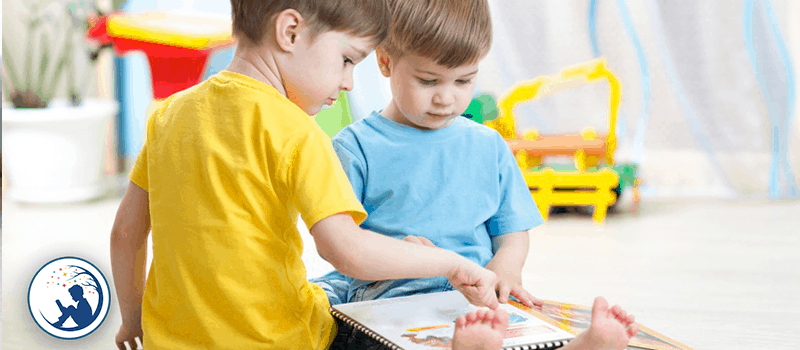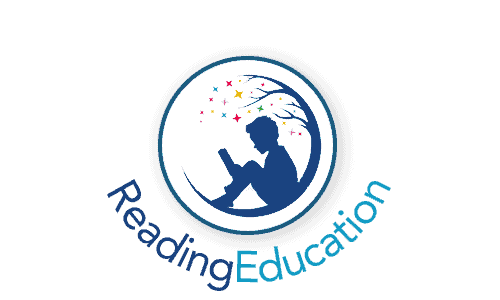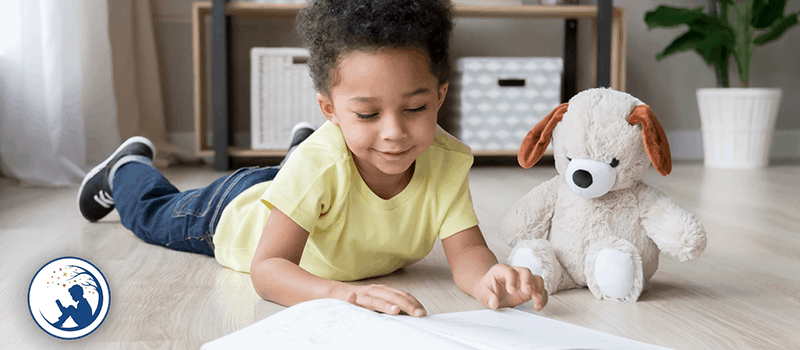Contrary to popular belief, learning to read is not an organic, natural process that merely happens by itself. In fact, it’s an intricate undertaking that calls for proper teaching of a plethora of skills, techniques, and strategies, such as phonemic awareness and phonics.
On the face of it, this teaching kids to read may seem like a daunting task; however, despite it being a somewhat complex and continuous affair, the steps required to develop reading skills in kids are relatively simple and straightforward. The issue most parents have, though, is where to begin. Given that most adults have never taught a child to read before, constructing a time-friendly and effective teaching method and timetable that is both positive and rewarding can be a challenge.
I’m guessing that if you’ve found your way to this article, you’re probably in the above boat of not knowing exactly what to do or where to start. Well, I’ve got some goods news for you – we’re going to share with you ten simple steps that you can employ to teach your kids to read. While it won’t be a quick or overly easy process, it will be fun and beneficial for everyone involved! So, without further ado, let’s get stuck in.
Teaching Children How To Read: 10 Simple Steps That Anyone Can Follow

1. Nursery Rhymes and Songs Build Phonemic Awareness
Although nursery rhymes and songs for children may seem like they’re just about having fun, they actually do a lot a more than merely bring a smile to a child’s face. The rhythm and rhyme contained in songs and nursery rhymes help children hear and become aware of the syllables and sounds in words, which, in turn, helps them to learn to read. One of the best ways to install phonemic awareness (which is by far and away one of the most vital skills where learning to read is concerned), is to recite songs while clapping in time with the rhyme in unison with your child. This fun-laden activity will not only help your child to develop literacy skills that will make the process of learning to read easier; it will always help you to bond with your child.
2. Word Cards
Although the process of teaching kids how to read can be a complex one, that doesn’t mean it requires complex tools. Word cards, for example, are a simple and effective method for teaching children the different sounds of a word – and they’re really easy to make too! All you need to do is cut out pieces of cardboard, and write a word that has three sounds on each piece, e.g. dam, hat, win, hot, big. Ask your child to select a card, then read the word out loud together and hold up three fingers. Invite them to say the first sound that they hear in the word, followed by the second, and lastly the third. This an excellent activity that requires very little set-up time and helps to develop crucial phonics and decoding skills. If your son or daughter has only just started learning the alphabet, concentrate on helping them to understand the sound each letter makes, rather than the names of the letters.
3. Turn Your Home Into ‘Reading Environment’
Every day and every place should be an opportunity for your child to read. To turn your home into a ‘reading environment’, print out words on paper, labels, posters etc. and place them around the house. This will allow your child to see words and proceed to create connections between sounds and the letter. If you’re outside of your home, point to letters on signs, posters and anywhere else they might be. When doing this, breaks the word down into individual letters, starting out with just focussing on the first letter in the word. Ask them what sound that letter makes, then ask them which other words start with that letter and if there are any words they can think of that rhyme with the word. Asking them to think for themselves will help overall development as well as boosting their literacy ability.
4. Word Games
All children love games (most adults do too!), but making them educational is even better as your child can have fun and learn at the same time! This leads on from the above point (number three), i.e. making sure that seeing, saying and talking about words and letters happens throughout the day. When playing word games, focus on playing ones that encourage your child(ren) to listen to, identify and then manipulate the sounds made by saying words. For example, ask them what sound a specific word begins and ends with; what words start with a specific sound and what words rhyme with a specific word.
5. Core Skills Understanding
Learning to read involves an array of different skills. In total, there are five crucial components of reading, which are the skills all children require in order to learn how to read successfully. Here is a summary of these five skills:
Phonemic Awareness: This is the ability to hear and be able to manipulate different sounds within words.
Phonics: This is the ability to recognise the connection and relationship between letters and the sound(s) they make.
Vocabulary: This is the ability to understand the meaning of words, how they are defined, in addition to their context.
Reading comprehension: This is the ability to understand the meaning of the text in both informational and storybooks.
Fluency: This is the ability to read out loud, with accuracy, understanding, and speed.

6. Letter Magnets
One aspect of learning to read that some children may find tricky are middle vowel sounds. However, using letter magnets can help your child to learn to understand and say middle vowel sounds. To start this activity, place all the vowels on one side. Say a three-letter word that has a consonant-vowel-consonant structure, and ask your child to spell it. To give them a helping hand, say all of the vowel sounds out loud while pointing to the respective letters, then ask them which one makes a sound like the middle sound of the word.
7. Technology Is Your Friend
As mentioned previously in this article, learning to read should be enjoyable and fun, as this helps to keep kids motivated and staves off potential boredom. In some instances, a child might be brimming with eagerness and excitement when beginning the process of learning to read, but may soon become disillusioned if they hit a wall and want to give up. From a parent’s perspective, it can often feel very difficult to pick up where you left off and address the issues that are causing your child frustration.
Current technology allows for every aspect of learning to read to be covered – as well as helping you to fill in any gaps that you’re unsure how to fill in on your own. Using reward-based learning to read apps, games and websites (or other forms of technology) can help you to push past any problems your child might be facing and help them to continue to develop their reading skills.
8. Read Together Every Day
We’ve all heard the phrase “practise makes perfect”, and it is no different for reading. In fact, it is crucial that your child practices reading as much as they possibly can. What many parents don’t realise is that a wide array of skills can be picked up through merely reading to their child. Not only does it show them how to sound out words, but it also helps to build comprehension skills, increase and improve their vocabulary, and lets them hear and know what a fluent English reader sound like. Furthermore, reading on a regular basis will also help your child to love reading, which is a cornerstone of reading success.
To further enhance daily reading, ask your child questions. For younger children, invite them to engage with the pictures and ask them questions related to them, such as “Do you see the car?” or “What colour is the ship?”. For older children, ask them questions about the text you’ve just read.
9. Sight Words Games
Sight words are words that are not easy to sound, yet need to be recognised on sight. These are typically high-frequency words that occur numerous times when reading and in everyday life. Examples of high-frequency sight words are: the, they, them, I, you, was, does, here, have, to etc. We recommend employing a technique called “When you see the word, say it”. Learning to both identify and read sight words is a crucial part of learning to read, and will enable younger readers to become fluent at a faster pace. The majority of children will have the ability to learn a handful of sight words by the age of four and around 25 by the end of their first year of school.
10. Patience Is The Key
It is imperative to remember (at all times) that each individual child will learn as their own pace, so you must be patient and ensure learning is fun! The combination of daily reading, mixing word games and activities up, and allowing your child(ren) to choose their own book from time to time, will help to keep things fresh, enjoyable, and, most importantly, help them to develop your little ones reading skills!
Thank you for taking the time to read our blog; we really appreciate your time and hope you found this article informative and helpful. If you have any comments, questions, or suggestions, please don’t hesitate to get in touch!

